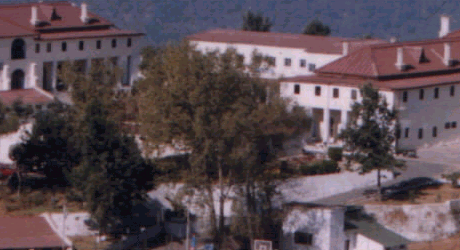Dagshai

Nestling amid the sylvan splendor of the Shivalik foothills lies a sleepy hamlet called Dagshai. Located ideally barely 50 kms from Chandigarh on the Kalka - Shimla Highway (NH-22), Dagshai is one of the oldest British cantonments with a unique old word charm. It is just 4 kms off the highway and a signboard near Dharampur marks the turn off. Built at the height of approximately 6000 ft. above the sea level, it boasts of a huge play field where Durand Cup football matches used to be played. Though a modest hill station, Dagshai is resplendent with scenic beauty and offers an ideal retreat for the city weary people. Perched atop the Dagshai hill, the Army Public School, with its colorful red and green rooftops can be seen from the National Highway -22, as if beckoning the outlooker towards itself. The imposing buildings on the campus were built in 1876. Every building is associated with the glories of the past and appropriately an educational Institution has been establishment in them. The nearest railway station Dharmpur (Metre Gauge) is 5 Kms and Kalka (Broad Gauge) is 28 Kms from Dagshai. The District Headquarters, Solan is about 16 Kms away.
Dagshai has a story to tell, so one turns over the pages of history to trace its emergence from a cluster of hamlets in wooded wilderness to an establishment of significant historical importance.
In the early 19th century, the British were invited by local hill chiefs to liberate them from the continued terror and attacks of Gurkhas. On May 15, 1815, a major battle was fought at Malaon . The combined forces of the British with their superior artillery, the Sikhs and local hill chiefs crushed the Gurkhas in a stunning defeat. A declaration was then signed with the hill chiefs, restoring them their land under British Protectorate and with the British maintaining cantonments at Sabathu, Ramgarh, Kotgarh and Sandoch. The Maharaja of Patiala, who assisted the British in the battle against the Gurkhas, was awarded land in the neighbourhood areas, which now constitutes Shimla and surrounding mountainous terrain. On the death of Maharaja Ranjit Singh in 1839, the Punjab state plunged into turmoil and disorder. The British took the opportunity to strengthen themselves militarily and politically and established cantonments in Kasauli, Jutogh and in ?Dagshai?, formed with five little hamlets. All the while Shimla continued to be the most favourable focal point, where buildings, offices, schools, markets, promenades, etc. came up. The satellite hill stations assumed greater importance with increased British presence in Shimla.
Dagshai developed into a well-established cantonment with a large jail, the foundation stone of which was laid in 1846. Here freedom fighters, mutineers and foreign law-breakers were interned and sentenced to rigorous imprisonment. The convicts were tattooed on their foreheads with indelible markings that permanently branded them. Hence the name Daaghe-Shahi, marked or stained by royalty, for Dagshai was conceived. Many prisoners were hanged here. To this day, there stand 50 prison cells. Each cell is approximately 6 feet by 12 feet with a small iron-barred high window and locked by two strong doors ? one wooden and the other made of iron. The doors are 6? feet by 2 feet. The jail was built on the lines of a fortress. At the entrance, there are two solid iron gates. All facilities were available on the jail premises. This area is now used as an M.E.S. godown.
When the First War of Independence broke out in May 1857, the hill areas were not much affected. Panic-stricken Europeans from the hills and plains fled to cantonments, seeking a safehaven at Dagshai, Sabathu and Kasauli. Local hill chiefs also provided security to the Europeans at their residences and protected areas. The revolt was eventually crushed.
Dagshai, meanwhile, grew in importance and prospered. According to the 1901 census, its population was 2000. The market area was a buzzing centre of retail and wholesale trade, especially in ginger and flour. Trading spread to neighbouring as well as far-off areas of Sirmaur district.
India?s Independence in 1947 brought with it the Partition of the country. Almost half of the local population in Dagshai migrated to Pakistan. The sudden fall in population adversely affected the economic stability and led to further migration of locals to more prosperous areas. Until 1985, two Army battalions were based in Dagshai. At present, it has one battalion and an Army Public School with residential facilities. The army establishments are self-sufficient and do not depend on local traders.
The local inhabitants are deeply concerned about Dagshai?s dwindling stature and hope the government would develop Dagshai, bringing it on the tourist map as a beautiful alpine resort which has economic viability and historical significance.
|
